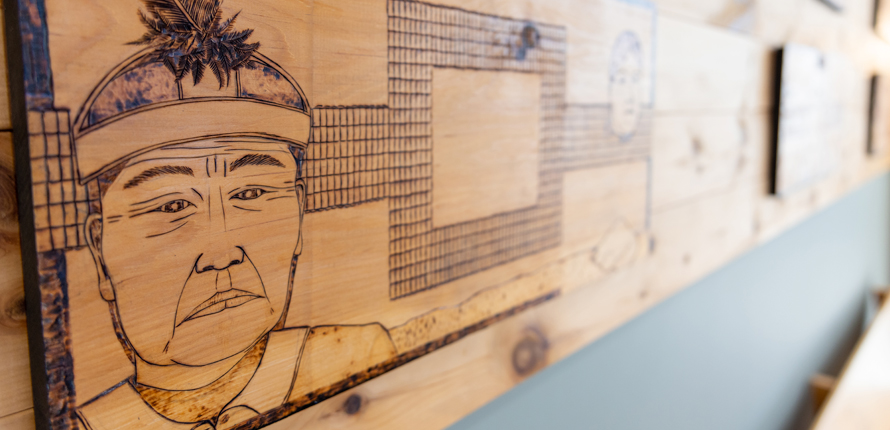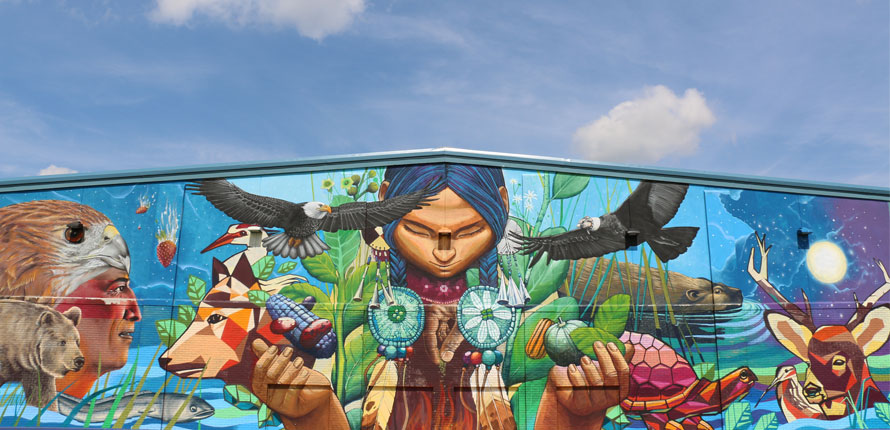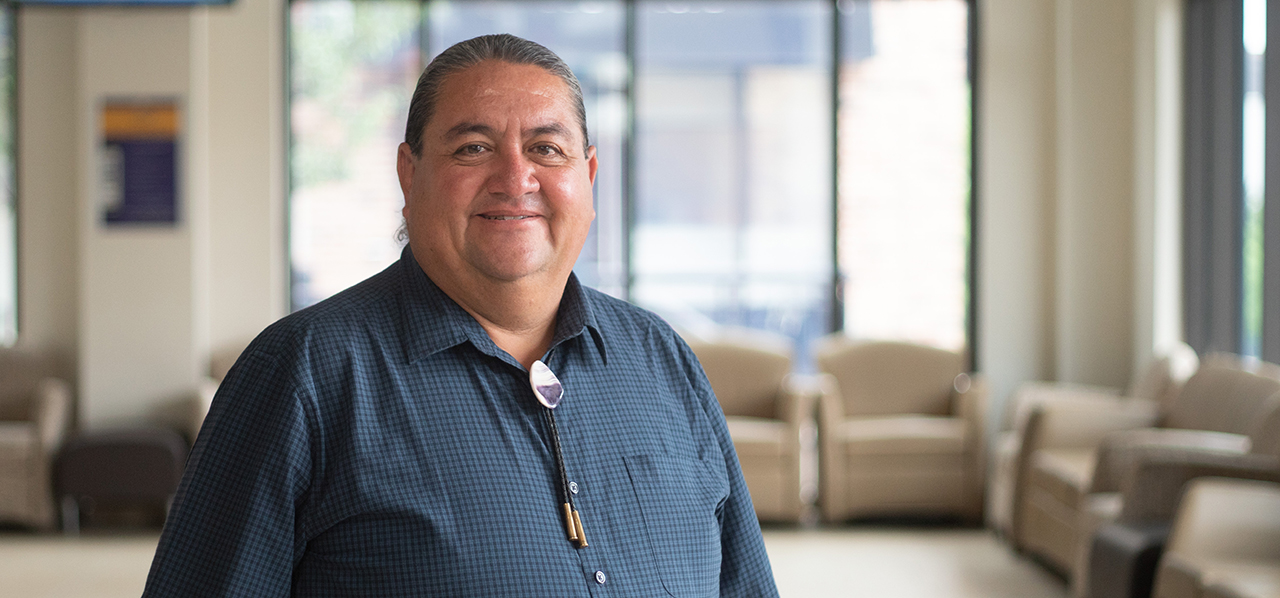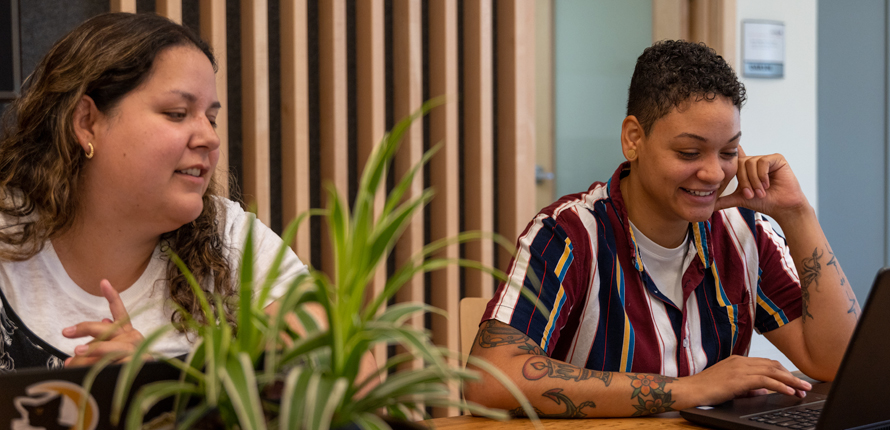Search for academic programs, residence, tours and events and more.

Indigenous Nations around the world built their respective civilizations on central philosophies and ways of knowing. The Haudenosaunee call these Ogwehonwe:geka original ways (Thomas, 2012), these are often referred to as the Natural Law (Lyons, 2008) or Original Instructions (Mohawk, 2008). Indigenous legal scholars successfully had these customary practices formally recognized within the Canadian Constitution as Indigenous Law (Borrows, 2002). These guiding principles inform Indigenous society on what it means to be a citizenship within their respective societies. These are described as “instructions” because they literally inform ones’ role, duty, and responsibility to the Nation. The strength, vitality, and health and well-being of the collective Nation is dependent upon the ability of the individuals to follow and fulfill their respective instructions. These laws were codified into the ancient treaties amongst Indigenous Nations prior to contact and guided the early Peace and Friendship Treaties with Settler societies.
One such agreement is the Dish with One Spoon Treaty; this covenant agreement is about stewardship and sharing. The metaphor used in this treaty explains that humanity has only one dish to “eat” from, therefore it is vital we care for this dish, so that all will benefit and enjoy the gifts of life. The dish itself is all the life within Creation, and that no one being has the right to deny anyone’s ability to enjoy life, so it is critical that we have a principle of co-existence and sharing to fulfill this treaty.
Now that Laurier and its campuses exist on these lands, it becomes imperative for the university to fulfill its role, duty, and responsibility to live in a principled existence and relationship with the Indigenous Peoples who have existed on these lands for over twelve thousand years (Warrick, 2014).

The Canadian public sector has been called to reconcile for historic colonial policies and practices by Canada’s Truth and Reconciliation Commission in its 94 Calls to Action (TRC, 2015). The Canadian public sector institutions have not served Indigenous Peoples well in the past and continues to cause harm to Indigenous Peoples which is evidenced in the extreme over- representation of Indigenous Peoples in the population health data in Canada. While every area of the public sector struggles with addressing the calls to action to improve its services to meet the needs of Indigenous Peoples, what remains consistent is the inability to articulate what “reconciliation” means and represents across such public sector agencies. Educational institutions were specifically called out in actions: 10, 11, 16, 62, and 65, which support research, understanding, and awareness of reconciliation; lessening the gap of educational attainment for Indigenous learners, and working in partnership with Indigenous community to preserve Indigenous languages.
The legacy of harm experienced by Indigenous families through Indian Residential School remains one of the primary reasons for the historical under-representation of Indigenous Peoples in higher education. Education is a pathway to ensure the successful growth of Indigenous Peoples in Canada, which is framed by the Royal Commission Report on Aboriginal Peoples (1996),
The destiny of a people is intricately bound to the way its children are educated. Education is the transmission of cultural DNA from one generation to the next. It shapes the language and pathways of thinking, the contours of character and values, the social skills and creative potential of the individual. It determines the productive skills of a people. (p. 404)
Educational institutions can transform this legacy of harm for Indigenous families in Canada provided it is done in collaboration and partnership. The challenge for educational institutions is to share power in determining what “education” represents for Indigenous Peoples. For Indigenous families, education represents the on-going ability to revive and restore Indigenous knowledge ways, including the preservation of Indigenous languages and customary practices. For many educational institutions, education represents a Western definition of building and enhancing skills and training for participation in greater society. The reality is Indigenous families desire both, but it is how this will be accomplished remains the challenge.
For more than 25 years, Aboriginal people have been articulating their goals for Aboriginal education. They want education to prepare them to participate fully in the economic life of their communities and in Canadian society. But this is only part of their vision. Presenters told us that education must develop children and youth as Aboriginal citizens, linguistically and culturally competent to assume the responsibilities of their nations. Youth that emerge from school must be grounded in a strong, positive Aboriginal identity. Consistent with Aboriginal traditions, education must develop the whole child, intellectually, spiritually, emotionally, and physically. (RCAP, 1996 p.404)

associate vice-president: Indigenous Initiatives
As the sector strives for transformational change, the newly released Commitments to Truth and Reconciliation by Universities Canada call for a commitment by universities to support relations with Indigenous Peoples and to play a strong supportive role in reconciliation for years to come. Laurier’s strategic plan aligns strongly with the stated commitments of creating policies and strategic plans that support reconciliation by universities; supporting Indigenous student success; supporting teaching and learning by including Indigenous knowledge in curricula; improving research relationships with Indigenous Peoples; a stronger Indigenous community engagement; and to support Indigenous talent at all levels of the university.
As the senior leader tasked with leading Laurier’s strategic plan for Indigenization, it has been critical to pay attention to the current culture and climate of the sector, of Indigenous community, Indigenous scholarship, and the larger needs to support reconciliation in Canada. Gaudry and Lorenz’s article has informed my development of this strategic plan.
This contribution outlines the challenges across the post-secondary sector due to various interpretations of what Indigenization is, and who determines the actions forward. Some institutions are retaining the power to define Indigenization without listening to Indigenous community which results in continued harm to Indigenous Peoples by implementing strategies not informed by Indigenous community partners.
|
Goals |
Action |
Outcomes |
Results |
|---|---|---|---|
|
Inclusion Indigenization |
Policies to increase Indigenous students, staff and faculty |
Supports to assist Indigenous Peoples to successfully adapt to the university |
Strongly resourced Indigenous People will find success |
|
Reconciliation Indigenization |
Bridging common ground on Indigenous and Western ways of knowing |
Increased respect and honour of Indigenous thought and philosophy |
Indigenous People will find success by working and learning in a culturally safe environment |
|
Decolonial Indigenization |
Overhaul of knowledge production to balance power between Indigenous and Western ways of knowing |
Altering how knowledge production is generated and shared |
An environment that generates equitable and safe spaces for all learners |
The pathways for transformation table demonstrates various interpretations and approaches to Indigenization that lead to various results. I used their work to inform my vision for a pathway for transformational change at Laurier. Gaudry and Lorenz (2018) frame Indigenization with three specific approaches that serve distinct goals.
The first goal although a critical step and one many post-secondary institutions have implemented more readily, is Inclusion Indigenization which can be a token gesture without the additional goals implemented. By bringing in more Indigenous students, staff, and faculty is a successful start, it becomes token if institutions do not strive to ensure Indigenous Peoples success at their respective institutions. Ultimately Indigenous Peoples’ success at university is still dependent upon Indigenous individuals having to navigate and adjust to the university community.
Reconciliation Indigenization seeks to introduce Indigenous ways of knowing throughout the university. This is not to dismiss the contributions of Western Science but to create the space for the contributions of Indigenous Science to be made. This approach helps to change the university to make it more representative and supportive of Indigenous faculty, staff, and students.
Decolonial Indigenization is an aspirational goal, and one that most Indigenous scholars, community, and student’s desire. This approach requires the most effort to transform as it reframes the university to being an active participant in relationship to Indigenous community. Although this is the most aspirational approach, it is one that Laurier should commit to because of the lands we now occupy, and its desire to be a leader across the sector.
This strategic plan is built on logic models. Logic models are one way to visually represent a high-level view of a strategic plan. A well-constructed logic model demonstrates the resources and activities required to achieve objectives and outcomes. A logic model identifies key metrics that may be used for evaluation while providing opportunities to witness the planned outcomes as direct result of your actions. A logic model starts with a Change Theory, that hypothesizes if we do A then B will happen. The inputs shown are considered what is required for the intended activities to occur, which demonstrate the anticipated outcomes over time.
To ensure the successful outcome the university must commit to fulfilling its role, duty, and responsibility as a treaty partner to the Indigenous Nations on the Dish with One Spoon Territory. This means that although Laurier is not responsible for the harms of the past, the university can be part of the solution by working on reconciling these historic harms. This Indigenization strategy aligns with the Truth and Reconciliation Commission’s Calls to Action numbers 10, 11, 16, 62, and 65, Laurier will support Indigenous health and well-being, help Indigenous and allied learners consider how they can action reconciliation, to work to preserve Indigenous thought and philosophy, Indigenous languages, and where we all play a role in ensuring a better Canada for all.

Indigenization is a movement centering Indigenous knowledges and ways of being within the academy, in essence transforming institutional initiatives, such as policy, curricular and co-curricular programs, and practices to support Indigenous success and empowerment. (Pidgeon, 2016 p. 77)
There are four separate logic models that each share the following Change Theory:
By providing an Indigenized learning environment, Laurier will uphold its role, duty, and responsibility to honour treaty relations on the lands known as the Dish with One Spoon.
Each logic model also has the identical Inputs, as these are the foundations required to meet the objectives of this plan. Indigenous Strategic Plan Logic Model is a high-level view of Indigenization at Laurier and demonstrates the larger over-arching goals of Laurier’s Indigenous Strategic Plan. Considering this Indigenous strategic plan with three distinct approaches of Indigenization, reconciliation, and decolonization, Indigenization Logic Model outlines specific activities to that will work toward Indigenization as the outcome. Reconciliation Logic Model demonstrates activities toward Reconciliation, and Decolonization Logic Model demonstrates activities toward decolonization.
|
Inputs |
Activities |
Short-Term Outcomes |
Medium-Term Outcomes |
Long-Term Outcomes |
|---|---|---|---|---|
|
|
|
|
|
|
Inputs |
Activities |
Short-Term Outcomes |
Medium-Term Outcomes |
Long-Term Outcomes |
|---|---|---|---|---|
|
|
|
|
|
|
Inputs |
Activities |
Short-Term Outcomes |
Medium-Term Outcomes |
Long-Term Outcomes |
|---|---|---|---|---|
|
|
|
|
|
|
Inputs |
Activities |
Short-Term Outcomes |
Medium-Term Outcomes |
Long-Term Outcomes |
|---|---|---|---|---|
|
|
|
|
|

The logic models in this strategic plan provide a high-level view of the Indigenization efforts at Laurier. There are many finer details and activities happening and that will happen to help implement the necessary transformational change. As this document references the planned primary activities for Indigenization, reconciliation, and decolonization, and the stated inputs and activities are committed to, these aspirational goals and outcomes for the university will be accomplished.
The logic models provide us a road map to determine pathways to a successful transformational change. Building a campus community where all students, staff, and faculty can find a safe place to learn, work, and teach will position Laurier as a leader across the sector.
Borrows, J. (2002). Recovering Canada: The resurgence of indigenous law. University of Toronto Press.
Gaudry, A., & Lorenz, D. (2018). Indigenization as inclusion, reconciliation, and decolonization: Navigating the different visions for indigenizing the Canadian Academy. AlterNative: An International Journal of Indigenous Peoples, 14(3), 218-227.
Lyons, O. (2008). Listening to Natural Law. In Nelson, M. K. (Ed.). Original instructions: Indigenous teachings for a sustainable future. Simon and Schuster.
Mohawk, J. (2008). The Iroquois Confederacy. In Nelson, M. K. (Ed.). Original instructions: Indigenous teachings for a sustainable future. Simon and Schuster.
Pidgeon, M. (2016). More than a checklist: Meaningful Indigenous inclusion in higher education. Social inclusion, 4(1), 77-91.
Royal Commission on Aboriginal Peoples. (1996). Report of the Royal Commission on Aboriginal Peoples. Indigenous and Northern Affairs, Canada.
Thomas, D. (2012). Ogwehowehneha: A Hodinohsonih research methodology [Unpublished master’s thesis]. Wilfrid Laurier University.
Truth and Reconciliation Commission (2015). Calls to Action. Truth and Reconciliation Commission, Canada.
Warrick, G. (2012). Buried stories: Archaeology and Aboriginal peoples of the Grand River, Ontario. Journal of Canadian Studies, 46(2), 153–177.